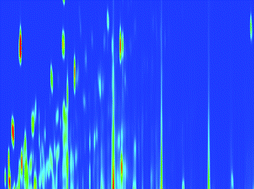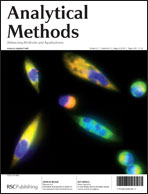Methodology for the derivatization and quantification of dialkyl phosphate esters in petroleum samples
Abstract
Dialkyl phosphate esters are used as gellants in some oil well fracturing processes for conventional oil production. Residual amounts of these compounds that remain in the well represent a source of potential contamination of the crude oil produced from the well. This contamination results in fouling of refinery equipment. Current methodologies for the analysis of alkyl phosphates have a relatively poor detection limit (0.5 ± 1.0 µg mL−1) and provide no speciation information: only a total phosphorus concentration. Herein, we present an approach that permits speciation of individual alkyl phosphates and quantification of individual compounds with limits of detection and precision that represent an improvement on the existing methodology. The method that we present relies upon


 Please wait while we load your content...
Please wait while we load your content...